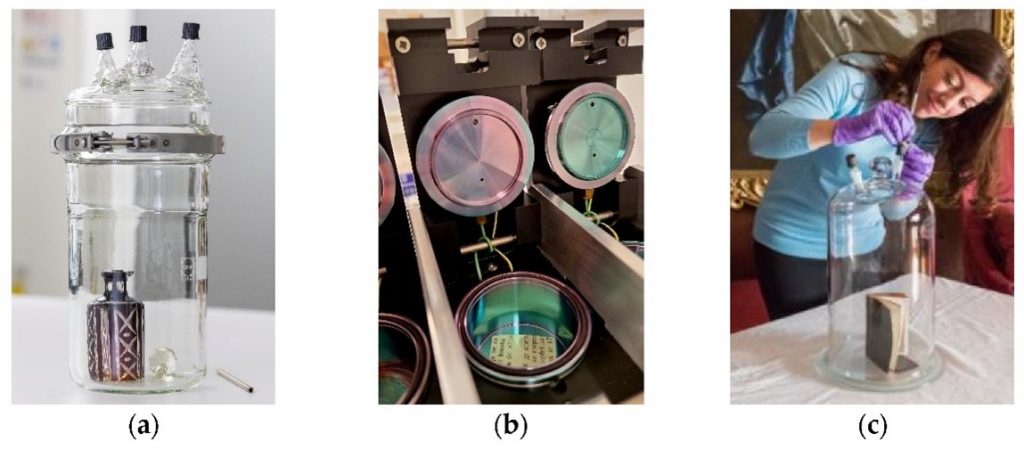Indoor air quality in heritage environments is firmly in the focus of scientific research, particularly with regard to the presence and effects of volatile organic compounds (VOCs). These compounds can come from a variety of sources, including objects, furnishings, visitors, staff and even olfactory exhibitions.
The review paper by the PhD student Emma Paolin and prof. dr. Matija Strlič explores VOCs in terms of their origins, effects and the methods used to study them. By analysing these emissions, researchers gain insights into the composition, conservation history and degradation processes of heritage objects. This information is crucial for the preservation of cultural heritage, as it ensures that artefacts are preserved in optimal conditions.
Part of the review is dedicated to the techniques used in the collection of VOC samples for heritage science and the difficulties and gaps present, such as the challenges when different materials or non-homogeneous surfaces are involved. The methods of sampling range from bulk air samples to preconcentration techniques using specific samplers.

The comparison between the existing guidelines for indoor volatile concentrations is then explored. This not only highlights differences between those specific for heritage environments and the one proposed by the World Health Organisation, but also emphasises the importance of further research in this area.
The full article is accessible at: https://www.mdpi.com/2076-3417/14/11/4620
